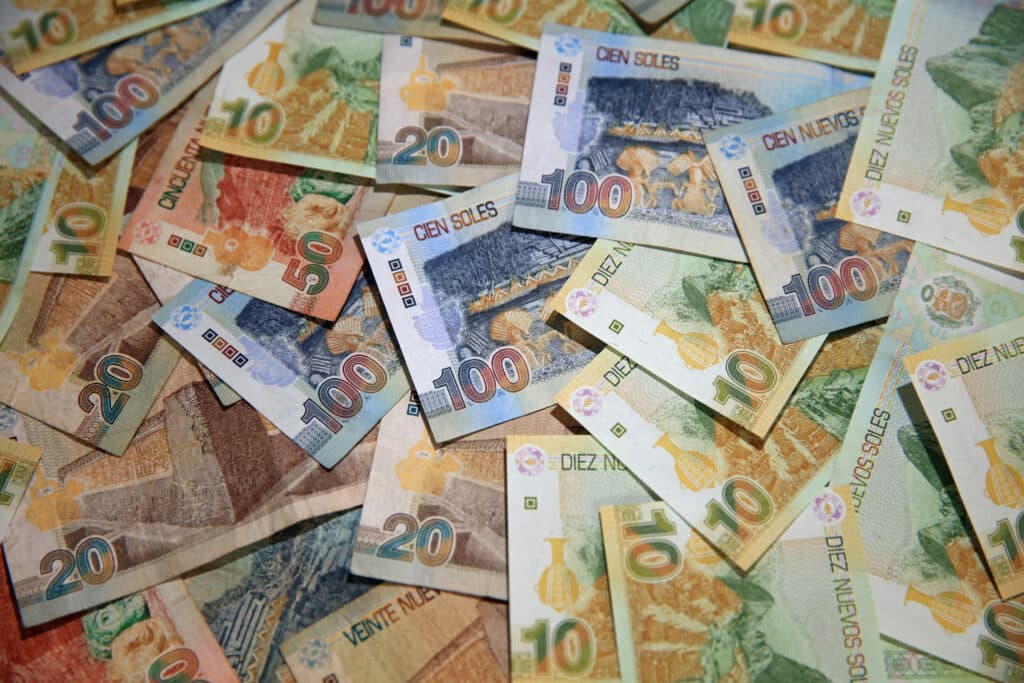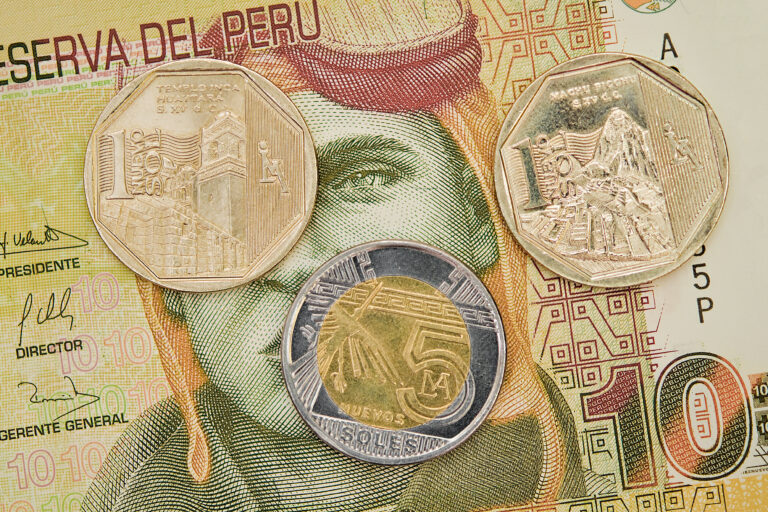
Peru’s currency, the Peruvian sol (SOL), has a fascinating history and plays a vital role in the nation’s economy. Whether you’re travelling to Peru or sending money there, understanding the sol’s evolution, features, and exchange tips can make your experience smoother.
What Is the Official Currency of Peru?
The Peruvian sol is the official currency of Peru, symbolised as S/. Its currency code is SOL. You’ll encounter the sol throughout Peru, from the historic streets of Cusco to the bustling capital of Lima.
- Common denominations:
- Coins: 10, 20, 50 céntimos, and 1, 2, 5 soles
- Banknotes: S/10, S/20, S/50, S/100, S/200
For example, a price of 550 soles would be written as S/550.
A Brief History of the Peruvian Currency
Pre-Colonial and Spanish Rule
Before Spanish colonisation, the Inca Empire used quipu, a system of knotted cords, to manage trade and inventory. During Spanish colonial rule (16th–19th centuries), the Spanish real became the primary currency.
Post-Independence Evolution
After gaining independence in 1821, Peru introduced its own version of the real. Over time, economic instability and hyperinflation led to multiple currency changes:
- 1963: The real was replaced by the first sol.
- 1980s: The sol was replaced by the inti due to hyperinflation.
- 1991: President Alberto Fujimori introduced the nuevo sol, which stabilised the economy.
- 2015: The currency was officially renamed sol, simplifying its title.
Today, the Peruvian sol is a symbol of economic recovery and stability.
Send and Receive Money Internationally in the UK with Remitly.
Get started with our free mobile app.
Download
Features of Peruvian Sol Banknotes and Coins
Banknotes
- Common denominations: S/10, S/20, S/50, S/100, S/200
- Security features:
- Three watermarks
- Security stripe
- Black strips with raised ink
- Microprinting, variable ink, and fluorescent elements
Each banknote pays homage to Peru’s history:
- S/10: José Abelardo Quiñones Gonzales, a war pilot and national hero
- S/20: Raúl Porras Barrenechea, a former president and Foreign Affairs Minister
- S/50: Abraham Valdelomar, a journalist and poet, considered the founder of Peruvian avant-garde literature
Coins
- Common denominations: 10, 20, 50 céntimos; 1, 2, 5 soles
- Low-value coins like 1 and 5 céntimos have been discontinued (2011 and 2019, respectively).
Fascinating Facts About the Peruvian Sol
A Tribute to the Past
The name “sol” derives from the Spanish word for sun, symbolising hope and Peru’s post-independence currency.
Rescue from Hyperinflation
The introduction of the nuevo sol in the 1990s curbed hyperinflation, ushering in a stable era for Peru’s economy.
Rare Coins
Discontinued céntimos coins are now collector’s items, with the 1 céntimo coin no longer in circulation since 2011.
Durable Banknotes
Peruvian soles are made of cotton, not paper, ensuring durability and making counterfeiting more difficult.
Delayed Sun Symbol
Despite its name, the original sol currency didn’t feature a sun icon until the nuevo sol was introduced.
Tips for Exchanging and Using Peruvian Soles
Research Exchange Rates
Exchange rates fluctuate due to economic and political factors. Use an online currency converter or check rates at reputable banks or money transfer services.
Avoid Airports and Banks for Exchanges
Exchange offices at airports and banks often have less favourable rates. Instead, opt for casas de cambio (exchange houses) or high-end hotel exchange services.
Use ATMs for Cash Withdrawals
ATMs often provide competitive exchange rates, though you may incur small withdrawal fees. Ensure your card belongs to a global network like Cirrus or PLUS, and notify your bank before travelling.
Bring USD or Euros
Most casas de cambio accept U.S. dollars or euros for exchange. Converting other currencies before your trip can simplify the process.
Inspect Bills Carefully
Counterfeiting is an ongoing issue. Familiarise yourself with authentic notes and:
- Feel for raised textures.
- Check for clear watermarks.
- Tilt the note to see colour changes.
Carry Small Denominations
Many businesses prefer smaller bills due to counterfeiting concerns. Request a mix of denominations when exchanging money.
Sending Money to Peru
When sending money to Peru, consider exchange rates and fees to get the best value. Services like Remitly offer:
- Competitive exchange rates
- Secure transfers
- Delivery options, including bank deposits and cash pickups
Supported Peruvian banks include Interbank, BanBif, and Banco Azteca.
Peru Currency FAQs
What is the current exchange rate for USD to SOL?
Exchange rates vary daily. Check online currency converters or trusted financial institutions for real-time rates.
Are céntimos coins still in use?
Coins like 1 and 5 céntimos have been discontinued, but higher denominations (10, 20, 50 céntimos) are still in circulation.
Can I use credit cards in Peru?
Credit cards like Visa and Mastercard are widely accepted in major cities but may not be usable in smaller towns.
What should I do if I receive a damaged bill?
Inspect bills at the exchange counter. If damaged, request a replacement, as most businesses won’t accept torn notes.
How can I send money to Peru?
Use a service like Remitly for secure and affordable money transfers to major Peruvian banks or cash pickup locations.
